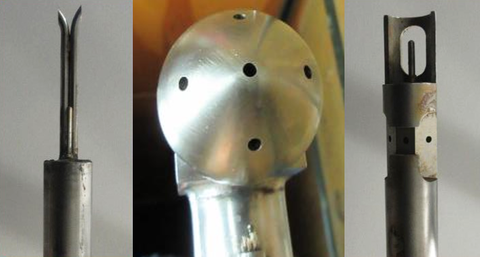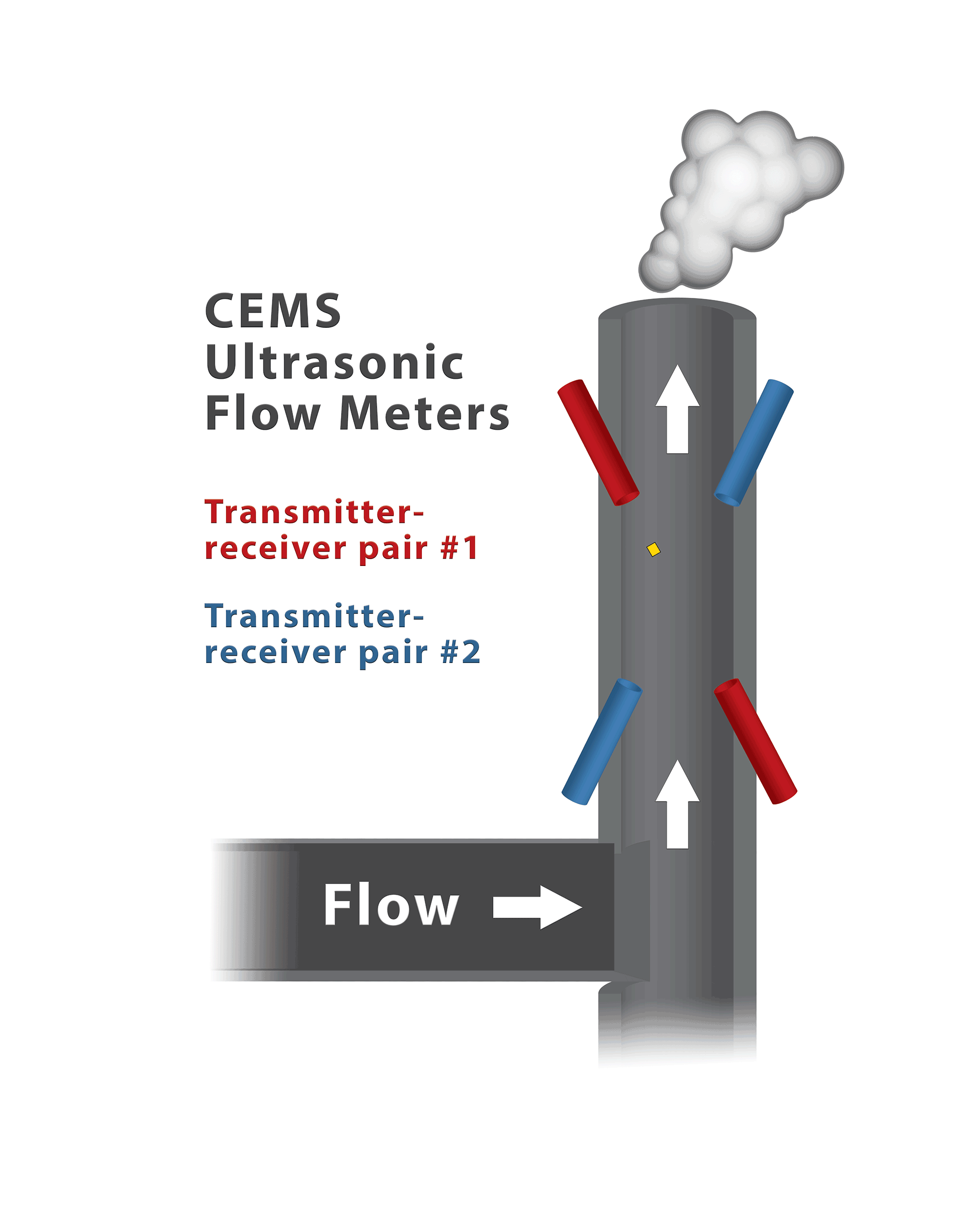
Three types of pitot probes. From left to right: s-probe, spherical probe, prism probe.
Smokestacks at coal-fired power plants have sensors that continuously monitor their emissions by measuring the flow of gases such as carbon dioxide, mercury, sulfur dioxide, and nitrogen oxides. By federal law, these sensors need to be calibrated every year. They are calibrated with small, portable flow-measurement devices called pitot tubes.
But scientists suspect there are fairly high uncertainties on the calibration measurements conducted with the pitot tubes. And uncertainties will be a problem for companies if power plants are charged for their emissions under cap-and-trade policies.
In anticipation of the eventual need to increase the accuracy of these measurements, and working in consultation with the Electric Power Research Institute (EPRI), researchers at the National Institute of Standards and Technology (NIST) have now measured the uncertainties of the different kinds of pitot tubes now being used to calibrate smokestack-emission sensors.
“The purpose of this study is to give industry options,” said NIST’s Aaron Johnson. “Can we make the measurements better? How much better? And can we do it cheaply?”
Fighting the Swirl
Measuring smokestack emissions requires two things: knowing the concentration of pollutants within a flue gas and knowing how fast the gas is flowing.
Researchers have been able to accurately measure concentration of emitted pollutants for decades. But getting accurate flow measurements has been trickier. This is because before being emitted, flue gas usually travels around a sharp bend. The bend creates complicated eddies and swirls that don’t go away even in tall smokestacks.
“The swirl persists as you go up,” Johnson said. “Flowmeters don’t like that. They perform very poorly when you have these crossflow components.”

Right now, to measure flow, smokestacks are installed with an ultrasonic system called a Continuous Emission Monitoring System (CEMS), which consists of a pair of devices that take turns sending ultrasonic pulses to one another from up and down the chimney. In one direction, the ultrasound travels with the flow and slightly speeds up. In the other direction, it travels against it and slightly slows down. Calculating the speed of the gas requires measuring how long it takes the ultrasound to travel in each direction.
Pitot tubes are small portable devices that gauge how well this CEMS ultrasound system is doing its job. Each year, technicians use pitot tubes to conduct what’s called a Relative Accuracy Test Audit (RATA). To conduct the audit, they insert a pitot tube into the smokestack horizontally. The tube has small holes or ports. One port faces directly into the flow of gas and detects the pressure that builds up in the tube. The faster the flow, the higher the pressure; measuring the pressure allows them to calculate the flow’s speed.
If the pitot tube measures the same flow as the ultrasonic CEMS device, the power plant passes its emissions test. But there are no rules that require the pitot tubes themselves to be calibrated. As a result, it’s not certain exactly how accurate either the CEMS or the pitot tube methods are.
Saving Money
The most commonly used pitot tube is called an “s-probe.” It has two ports that point in opposite directions. One port points directly into the flow. The other points directly away from the flow. The pressure is higher in the upstream port than in the downstream port. Technicians measure this pressure difference and use it to calculate the speed of the gas flow.
NIST researchers have been testing this type of pitot tube as well as two others, the “prism probe” and the “spherical probe,” both of which have five ports instead of two.
NIST’s Iosif Shinder is testing the three probes in a wind tunnel, in which flow is measured with high precision.
After being calibrated in the wind tunnel, the pitot tubes are also being tested in NIST’s horizontal smokestack simulator, which produces eddies and swirls similar to those in industrial smokestacks.
To use the s-probe pitot tubes in a smokestack, a RATA technician makes sure that one of the holes faces the true direction of the flow. In practice, this means rotating the probe to determine the direction of the highest pressure difference. The process, called “yaw-nulling,” must be repeated dozens of times during a RATA test.
“It’s pretty labor-intensive,” Johnson said. It’s so intensive that an on-site annual calibration can take days to complete. “And the power plant is losing money all the time the RATA testers are there, so they want the technicians in and out as fast as possible.”
By adapting a process used in other industries, Shinder is developing a technique that eliminates the need for yaw-nulling. It requires a more complex calibration of the pitot tubes in a laboratory, but Johnson and Shinder say they are confident that the savings from shortening RATA tests will offset the extra calibration expense.
Johnson and Shinder were also interested in improving the CEMS ultrasound method itself and are measuring how much better the measurements would be with a second pair of ultrasonic transmitter-receivers. They have been testing an x-pattern installation using two pairs of ultrasound devices instead of one, Johnson said. “With the x pattern, you compensate for cross flow.”
The researchers are arranging to test their findings in a working industry smokestack this summer. In addition to coal-fired power plants, Johnson said that cement and paper production industries might also be able to use the new information.
-- Reported and written by Jennifer Lauren Lee

